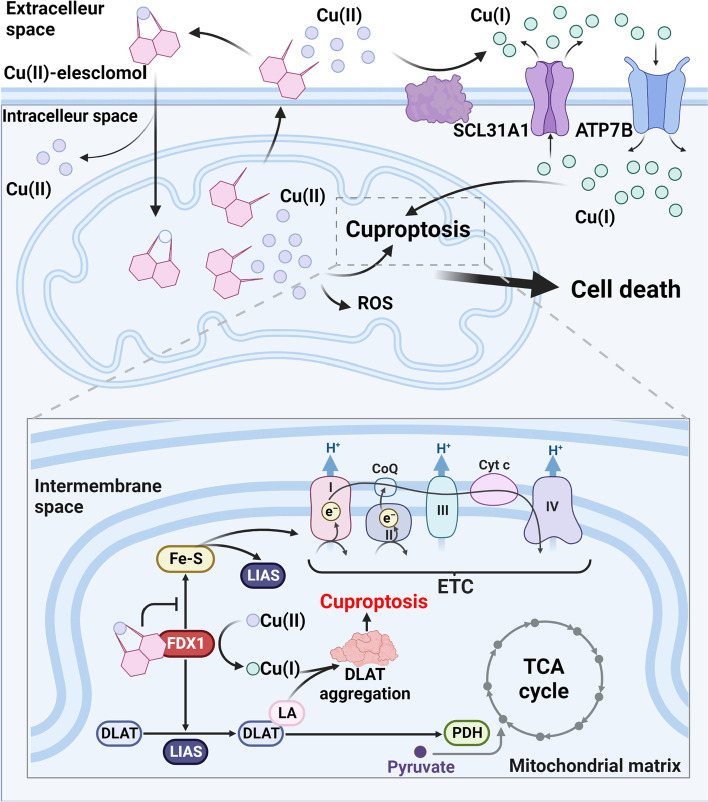Fig. 2.
Schematic diagram of the mechanism of elesclomol-induced cell death. Elesclomol shuttles inside and outside the cell to selectively transport extracellular Cu(II) to mitochondria, where Cu(II) accumulated in mitochondria induces ROS production and triggers cuproptosis. FDX1, a critical enzyme in the occurrence of pyroptosis, reduces Cu(II) to Cu(I) in mitochondria while promoting the lipoylation of DLAT, an enzyme participating in the formation of the PDH complex and affecting the mitochondrial TCA cycle. The reduced Cu(I) binds to lipoylated DLAT to promote its oligomerization, ultimately leading to the occurrence of cuproptosis. FDX1 also promotes Fe-S synthesis, while Cu(I) inhibits this process. Fe-S is an essential component of LIAS and ETC, the key enzymes in DLAT lipoylation, but its relationship with cuproptosis is unclear. In addition, the regulation of intracellular Cu(I) levels by membrane copper ionophores, such as SCL31A1 and ATP7B, is also associated with the occurrence of cuproptosis. DLAT: dihydrolipoamide S-acetyltransferase; ETC: electron transfer chain; FDX1: ferredoxin 1; Fe-S: iron-sulfur proteins; LA: lipoamide; LIAS: lipoyl synthase; PDH: pyruvate dehydrogenase; ROS: reactive oxygen species; TCA: tricarboxylic acid cycle

